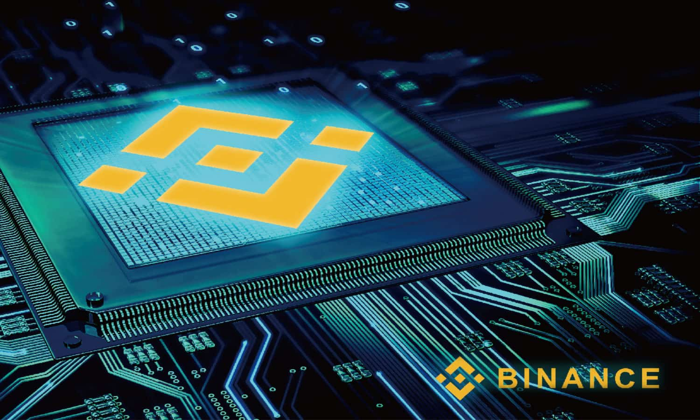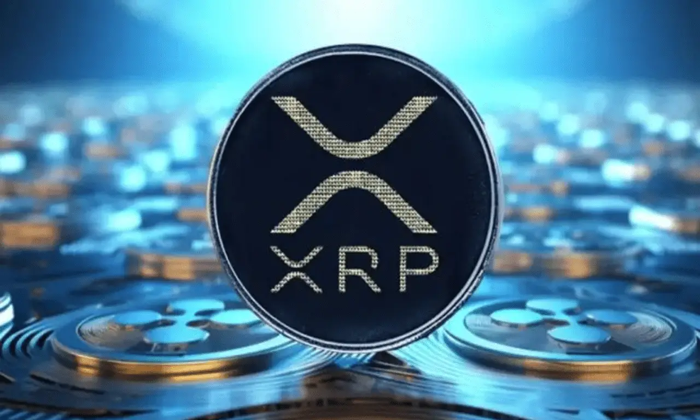Pi Network has captured the attention of millions with its innovative approach to cryptocurrency mining through a mobile app. Launched with great anticipation, the Pi Network mainnet launch on February 20 saw the native PI token being listed on various crypto trading platforms, including Bitget, OKX, and MEXC. Unfortunately, the excitement was short-lived as the PI token price plummeted over 65%, dropping from a high of $1.84 to just $0.64. Amidst this volatility, Bybit CEO Ben Zhou raised eyebrows by labeling the project a potential scam, calling for more transparency and legitimacy. As the community watches closely, the future of the Pi Network and its ambitious plans for decentralized finance hangs in the balance.
The Pi Network represents a novel concept in the realm of digital currencies, allowing users to mine tokens via a user-friendly application. Following its much-anticipated mainnet launch, the network has faced scrutiny regarding its legitimacy, especially after significant fluctuations in the value of its native token, PI. The project has made strides by listing the token across various crypto exchanges, yet skepticism remains, particularly from industry leaders like Bybit’s Ben Zhou. While the platform boasts a large user base, discrepancies in reported user numbers have raised questions about its decentralized nature. As discussions about its future unfold, the cryptocurrency landscape watches the Pi Network closely, seeking clarity on its impact and sustainability.
The Impact of Pi Network’s Mainnet Launch on PI Token Price
The launch of Pi Network’s mainnet on February 20, 2023, marked a significant milestone for the project and its native token, PI. However, the aftermath was far from positive, as the PI token experienced a drastic decline of over 65%. This drop was observed shortly after the token became available on various crypto trading platforms such as Bitget, OKX, and MEXC. Initially, the token had traded as high as $1.84, but within a short period, it plummeted to approximately $0.64. This sharp decline raised questions among investors regarding the project’s sustainability and future prospects, especially in light of the excitement surrounding the mainnet launch that was supposed to increase the token’s value.
Moreover, the sudden price drop prompted discussions about the overall market dynamics post-launch. Investors and analysts are closely monitoring the trading behavior of the PI token, as well as the sentiment around Pi Network’s ecosystem. The mainnet launch was expected to provide a foundation for increased transaction volumes and user engagement, but the steep decline in price suggests that market participants may be exercising caution or responding to broader market trends. As the crypto landscape continues to evolve, the performance of the PI token will be a critical indicator of Pi Network’s ability to establish itself as a legitimate player in the cryptocurrency space.
Bybit CEO Ben Zhou’s Stance on Pi Network
In a notable response to the concerns surrounding the legitimacy of Pi Network, Bybit CEO Ben Zhou publicly challenged the project after a report suggested it was targeting vulnerable elderly individuals as a scam. Zhou’s comments came in the wake of a broader warning issued by Chinese authorities, who advised the public to steer clear of the project. His remarks on social media platform X not only cast doubt on the integrity of Pi Network but also highlighted the skepticism that some industry leaders have towards emerging cryptocurrency projects. Zhou’s assertion that Bybit had no intention of listing the PI token further fueled speculation about the project’s credibility.
Zhou’s stance reflects a growing trend in the cryptocurrency market where established platforms are increasingly cautious about the projects they choose to support. This skepticism is particularly relevant in an industry that has seen numerous scams and fraudulent activities. As more exchanges and trading platforms evaluate the legitimacy of new tokens, the pressure on projects like Pi Network to demonstrate transparency and reliability intensifies. The response from notable figures like Zhou underscores the importance of building trust within the crypto community, especially for projects that rely heavily on user participation and engagement.
Understanding Cryptocurrency Mining with Pi Network
Pi Network has revolutionized the concept of cryptocurrency mining by allowing users to mine PI tokens directly through their mobile devices. Unlike traditional mining methods that demand extensive computational power and energy resources, Pi Network offers a more accessible approach. This innovative mining app has attracted over 60 million users, making it one of the largest cryptocurrency mining communities globally. However, despite the impressive user numbers claimed by the project, blockchain explorers reveal that the actual number of active users is significantly lower, at approximately 9.1 million. This discrepancy raises eyebrows regarding the project’s transparency and user engagement.
The appeal of mining through a mobile app lies in its ease of use and accessibility, which could democratize cryptocurrency mining for a wider audience. With just a few taps on their smartphones, users can participate in the mining process without the need for expensive hardware. However, as Pi Network continues to grow, the challenges of maintaining a decentralized network come into play. The project’s core team still controls the network, and the lack of independent validators raises concerns about its long-term viability. For Pi Network to gain credibility, it will need to address these issues and foster a truly decentralized ecosystem.
The Role of Crypto Trading Platforms in PI Token’s Journey
The involvement of major crypto trading platforms like Bitget, OKX, and MEXC in listing the PI token was a critical step for Pi Network following its mainnet launch. These platforms provide the necessary infrastructure for traders to buy and sell PI tokens, thereby increasing its market visibility. However, the initial trading activity showed a stark contrast to expectations, with the token experiencing a swift decline in price post-launch. This situation highlights the volatile nature of cryptocurrency markets, where factors such as market sentiment and trading volume can dramatically impact token prices within a short timeframe.
Moreover, the way trading platforms manage newly listed tokens can significantly influence their price trajectories. For instance, if a platform chooses to promote a token vigorously, it may attract more traders and potentially stabilize the price. Conversely, if skepticism surrounds a project, as seen in the case of Pi Network, trading volumes might dwindle, leading to further price declines. As the crypto landscape evolves, the relationship between tokens and trading platforms will continue to play a pivotal role in shaping the future of projects like Pi Network.
The Future of Pi Network: Challenges and Opportunities
As Pi Network moves forward post-mainnet launch, it faces a myriad of challenges and opportunities that will determine its long-term success. The substantial drop in the price of the PI token has raised concerns about investor confidence and the project’s overall reputation. To counteract this negative sentiment, Pi Network must focus on enhancing transparency and engaging with its community. By addressing the issues raised by critics, including Bybit CEO Ben Zhou, and demonstrating its commitment to decentralization, the project can work towards rebuilding trust among its user base.
Additionally, the future of Pi Network will hinge on its ability to innovate and expand its ecosystem beyond just mining. The launch of the mainnet allowed for integration with centralized exchanges, which is a significant step towards mainstream adoption. However, the project must continue to evolve by exploring partnerships, developing new use cases for the PI token, and fostering a vibrant ecosystem that attracts both users and developers. By capitalizing on these opportunities, Pi Network can potentially transform its narrative from one of skepticism to that of a legitimate and thriving cryptocurrency platform.
Decentralization in Cryptocurrency: The Case of Pi Network
Decentralization is a core principle of cryptocurrency, yet the Pi Network has faced scrutiny regarding its commitment to this ideal. While the project boasts millions of users, the central control maintained by its core team raises questions about the authenticity of its decentralized claims. As the network has yet to incorporate independent validators, the potential for true decentralization remains unfulfilled. This situation poses a challenge for Pi Network, as users increasingly seek projects that genuinely adhere to decentralized principles.
In the ever-evolving landscape of cryptocurrency, projects that prioritize decentralization tend to gain more traction among users and investors. To ensure long-term sustainability, Pi Network must demonstrate a commitment to decentralization by enabling independent validators and fostering a community-driven approach. By doing so, it can mitigate the risk of being perceived as a centralized entity, thereby enhancing its credibility in the competitive crypto market. As the demand for decentralized solutions grows, Pi Network’s ability to adapt will be crucial for its survival and success.
The Importance of Transparency in Cryptocurrency Projects
Transparency is vital for the credibility of any cryptocurrency project, and Pi Network is no exception. The recent price drop of the PI token and the skepticism expressed by prominent figures in the industry highlight the need for Pi Network to adopt a more open approach. Investors and users are increasingly wary of projects that do not provide clear insights into their operations, governance, and future plans. By prioritizing transparency, Pi Network can build trust and loyalty among its user base, essential components for long-term success.
In addition to fostering trust, transparency can also help mitigate risks associated with misinformation and negative publicity. By proactively sharing information about its developments, user statistics, and plans for decentralization, Pi Network can counteract the narratives that paint it as a scam. Furthermore, engaging with its community through regular updates and open channels for feedback can enhance the project’s reputation and user engagement. Ultimately, a commitment to transparency will not only benefit Pi Network but also contribute positively to the broader cryptocurrency ecosystem.
Exploring User Engagement Strategies in Pi Network
User engagement is critical for the success of any cryptocurrency project, and Pi Network must prioritize this aspect to ensure its growth trajectory. With claims of 60 million users, the challenge lies in converting this vast user base into active participants within its ecosystem. Effective engagement strategies could include educational initiatives, community-building events, and incentivized programs that encourage users to actively contribute to the network. By fostering a sense of belonging and encouraging participation, Pi Network can enhance user loyalty and retention.
Moreover, leveraging social media platforms and online communities can amplify the project’s reach and engagement. Bybit CEO Ben Zhou’s comments have sparked discussions around Pi Network, presenting an opportunity for the project to respond and engage with both supporters and skeptics alike. Addressing concerns and highlighting success stories can help reshape the narrative surrounding Pi Network. Ultimately, a proactive approach to user engagement will be essential for Pi Network to realize its potential and establish itself as a credible player in the cryptocurrency market.
Conclusion: The Path Forward for Pi Network
In conclusion, the journey ahead for Pi Network is filled with both challenges and opportunities. The project’s recent mainnet launch and the subsequent decline in the PI token price serve as critical learning points for its future direction. To succeed, Pi Network must prioritize transparency, engage with its user base, and demonstrate a genuine commitment to decentralization. By addressing the concerns raised by industry leaders and prioritizing user trust, the project can work towards rebuilding its reputation.
As the cryptocurrency landscape continues to evolve, Pi Network’s ability to adapt and innovate will determine its long-term sustainability. With a focus on fostering a vibrant ecosystem and enhancing user engagement, the project has the potential to transform its initial setbacks into a foundation for a successful future. By navigating the complexities of the cryptocurrency market with integrity and transparency, Pi Network can carve out a significant niche in the competitive world of digital assets.
Frequently Asked Questions
What caused the drop in PI token price following the Pi Network mainnet launch?
The PI token price dropped over 65% after the Pi Network’s mainnet launch on February 20. Although the launch allowed trading on several crypto trading platforms like Bitget, OKX, and MEXC, the initial trading saw the price plummet from $1.84 to $0.64. This significant decrease can be attributed to market reactions and skepticism about the project’s legitimacy.
What is the significance of Pi Network’s mainnet launch for the PI token?
The mainnet launch of Pi Network marked a pivotal moment for the PI token, enabling users to trade on centralized exchanges. This event aimed to transition the token from a test phase to a fully tradable asset, increasing its accessibility but also exposing it to market volatility and scrutiny, particularly after the drastic drop in PI token price.
How can I trade PI tokens on crypto trading platforms?
To trade PI tokens on crypto trading platforms, users need to register on exchanges that have listed the token, such as Bitget, OKX, or MEXC. Once registered, users can deposit their PI tokens and start trading. However, it’s essential to be cautious due to the recent volatility in the PI token price.
What are the concerns surrounding Pi Network as highlighted by Bybit CEO Ben Zhou?
Bybit CEO Ben Zhou raised concerns about Pi Network’s legitimacy, labeling it a potential scam in response to warnings from Chinese authorities. Zhou’s statements reflect skepticism within the crypto community, especially regarding the project’s claims and the significant drop in the PI token price after its mainnet launch.
What do users need to know about cryptocurrency mining on the Pi Network?
Pi Network allows users to mine cryptocurrency using a mobile app, differentiating it from traditional mining methods that require expensive hardware. While the project claims to have over 60 million users, blockchain data suggests around 9.1 million active users, raising questions about its decentralization and control by the core team.
How does the PI token price compare to other cryptocurrencies after its launch?
Since its launch, the PI token price has faced substantial fluctuations, dropping from $1.84 to $0.64. This decline is notable compared to other cryptocurrencies that may have stable or increasing prices post-launch, highlighting the market’s skepticism towards Pi Network’s viability and the legitimacy of its claims.
What should I consider before investing in Pi Network and the PI token?
Before investing in Pi Network and the PI token, consider the recent price volatility, the project’s legitimacy as questioned by industry leaders like Bybit’s CEO, and the warnings from regulatory authorities. Additionally, assess whether the mobile mining model aligns with your investment strategy and risk tolerance.
| Key Point | Details |
|---|---|
| PI Token Price Drop | The price of PI token dropped over 65% from $1.84 to $0.64 after the mainnet launch. |
| Mainnet Launch | Pi Network launched its ‘Open Network’ on February 20, enabling trading on various exchanges. |
| Exchanges Listing | PI token was listed on platforms like Bitget, OKX, and MEXC. |
| Criticism and Legitimacy | Bybit’s CEO challenged Pi Network’s legitimacy, labeling it a scam based on reports from Chinese authorities. |
| User Base Claims | Pi Network claims over 60 million users, but blockchain data shows only 9.1 million active users. |
| Mining Method | Users can mine tokens via mobile phones, contrasting with traditional energy-intensive mining. |
| Centralization Concerns | Despite claims of decentralization, the network is controlled by a core team with no independent validators. |
Summary
Pi Network has faced significant challenges following its mainnet launch, particularly with the drastic drop in the value of its native token, PI. While the project claims a vast user base and innovative mobile mining capabilities, it has attracted skepticism from industry leaders and regulatory bodies alike. As Pi Network navigates these tumultuous waters, its commitment to transparency and legitimacy will be crucial in shaping its future in the cryptocurrency landscape.
Pi Network has emerged as a fascinating player in the world of cryptocurrency, particularly following its much-anticipated mainnet launch. The enthusiasm surrounding the PI token price soared as users gained access to various crypto trading platforms, including Bitget and OKX, on February 20. However, this excitement quickly turned to concern as the token’s value plummeted by over 65% soon after trading commenced. Bybit CEO Ben Zhou has publicly challenged the project’s legitimacy, amidst accusations of it being a potential scam targeting vulnerable populations. As the community grapples with both the opportunities and risks associated with this cryptocurrency mining app, it remains to be seen how Pi Network will navigate these turbulent waters.
The Pi Network project, often referred to in discussions about mobile-based cryptocurrency solutions, has attracted attention with its innovative approach to digital currency mining. Following the launch of its Open Network, users were eager to engage with the newly listed PI token, which quickly became a topic of debate among crypto enthusiasts and skeptics alike. While many celebrated the accessibility offered by this cryptocurrency mining application, notable figures like Bybit’s CEO, Ben Zhou, raised alarms about the project’s credibility, labeling it a potential scam. With the recent volatility in the PI token price, the project’s journey from hype to reality is crucial for its future in the competitive landscape of digital assets. As more users join the network, the need for transparency and trust will become increasingly important in establishing its standing among mainstream cryptocurrency trading platforms.













